The Watch Dogs franchise, developed by Ubisoft, is one of the most ambitious and influential series in the modern gaming landscape. Combining the vast potential of open-world exploration with the themes of surveillance, hacking, and digital control, Watch Dogs offers players a unique lens through which to examine the relationship between technology, privacy, and power in the contemporary world. Since the release of the first game in 2014, followed by the sequels Watch Dogs 2 (2016) and Watch Dogs: Legion (2020), the series has evolved both in terms of gameplay and narrative complexity, exploring the consequences of living in an interconnected digital society.
Watch Dog 2 Game New Type of Vigilante
The first Watch Dogs game, released in 2014, was a groundbreaking effort to merge the thrill of open-world gaming with the emergent challenges of the digital age. The protagonist, Aiden Pearce, is a hacker and vigilante whose skills in manipulating Chicago’s Central Operating System (ctOS) allow him to control everything from traffic lights to bank accounts. This overarching system connects the entire city, allowing Aiden to access personal data, shut down security cameras, and even manipulate public infrastructure to carry out his mission of revenge.
The game’s core concept revolves around hacking, which is portrayed as a powerful tool for both good and ill. Aiden’s use of technology as a means of achieving justice brings up complex ethical questions—he uses his technical prowess to track down those responsible for harming his family, yet his actions often lead to collateral damage, showing the blurred lines between right and wrong in the digital age. The concept of surveillance, privacy, and control is introduced in Watch Dogs with the ctOS system acting as a metaphor for the increasingly interconnected and surveilled nature of our modern world.
Visually, Watch Dogs was a remarkable achievement for its time. The game’s depiction of a near-future Chicago was detailed and dynamic, capturing the vibrancy and dangers of the urban environment. Its real-time weather systems, changing day-night cycles, and ever-shifting pedestrian traffic created a living, breathing world that felt real. The integration of hacking into the city’s infrastructure was both a mechanic and a narrative device, tying together the gameplay experience with the story’s broader themes of surveillance, control, and the vulnerability of modern society to the power of digital systems.
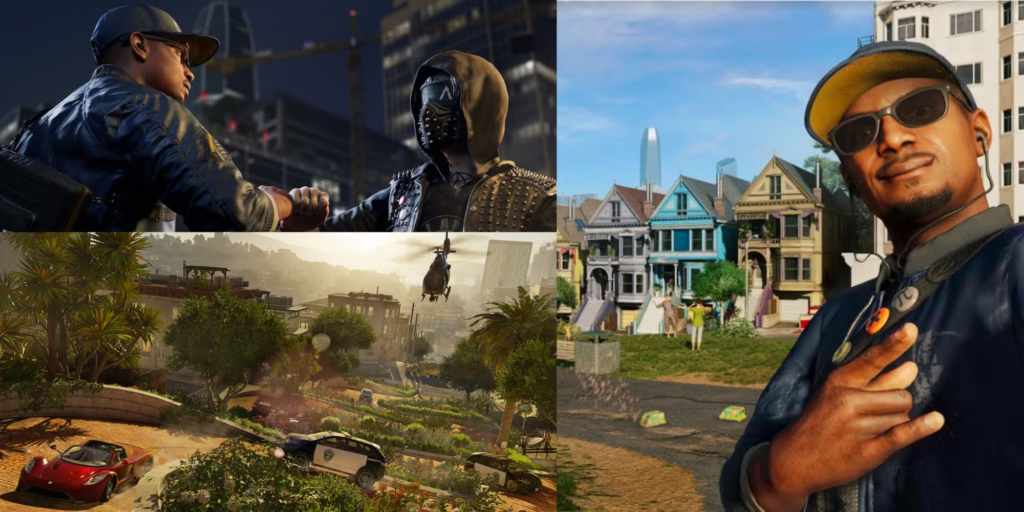
Watch Dogs 2: A Shift in Tone and Approach
Released in 2016, Watch Dogs 2 marked a significant shift in both tone and approach from the darker, more serious themes of the original game. The protagonist, Marcus Holloway, is a much more relatable and lighthearted character compared to the brooding Aiden Pearce. A young hacker from Oakland, Marcus becomes a member of the hacker collective DedSec, which aims to expose the corrupt uses of technology by large corporations and governments.
The shift in tone is evident not only in the protagonist’s personality but also in the game’s world. The vibrant, sun-soaked streets of San Francisco provide a stark contrast to the gritty, rain-drenched streets of Chicago. Marcus’s journey is more about exposing the hidden dangers of technology—such as surveillance, data mining, and the manipulation of public opinion—rather than seeking personal vengeance. In Watch Dogs 2, players are tasked with dismantling a massive, highly sophisticated system of digital control created by a corporation called Blume, which runs the ctOS network.
The game’s emphasis on hacking as a form of activism and resistance is both timely and relevant, reflecting the real-world concerns about the monopolistic power of big tech companies and the growing sense of disempowerment felt by individuals in the digital age. Unlike the first game’s more traditional narrative of revenge and justice, Watch Dogs 2 encourages players to think critically about the role of technology in shaping our society. The game also introduced a more dynamic and varied gameplay experience, with a wider range of hacking tools, a more diverse set of missions, and the ability to recruit NPCs to your cause, further emphasizing the game’s theme of collective resistance against powerful institutions.
The game also made strides in improving the mechanics and accessibility of hacking. While Watch Dogs had a more complex and occasionally cumbersome system for controlling the city’s infrastructure, Watch Dogs 2 streamlined the process and made it more intuitive. This allowed players to use hacking as both a combat tool and a means of solving puzzles, creating a dynamic and engaging gameplay loop that was both strategic and creative Watch Dog 2 Game.

Watch Dogs: Legion – The Future of Digital Revolution
The third entry in the series, Watch Dogs: Legion, released in 2020, took a bold step by reimagining the formula of its predecessors with a focus on a more expansive, yet personalized, experience. Set in a near-future dystopian London, Watch Dogs: Legion takes place in a society where the government has been overthrown by a totalitarian regime, and the city is under the control of private military corporations, rogue hackers, and criminal factions Watch Dog 2 Game.
The standout feature of Legion is its revolutionary approach to characters. The game introduces the concept of “Play as Anyone,” which allows players to recruit virtually any NPC in the game world to join the resistance. Each recruit has unique abilities, backgrounds, and personalities, which adds a layer of depth to the game and encourages players to experiment with different playstyles. Whether you’re playing as an ex-boxer with a penchant for physical combat or an elderly woman with a background in tech, every character can contribute to the fight against the regime in their own way.
This mechanic is more than just a novelty; it emphasizes the game’s core theme of empowerment and collective action. In a world dominated by surveillance, control, and corporate greed, Watch Dogs: Legion suggests that change is only possible when individuals come together and use their unique skills and experiences to create something greater than the sum of their parts. The game also touches on contemporary issues like the rise of AI, the erosion of personal freedoms, and the role of technology in modern warfare, making it one of the most relevant titles of its time.
Watch Dogs: Legion also expands on the concept of hacking introduced in the previous games by incorporating more diverse and tactical hacking mechanics. Players can hack everything from drones and cameras to enemy vehicles and security systems, creating countless opportunities for strategic play. The city of London is portrayed as a dark, corporate-controlled dystopia, and the game’s tone reflects the growing tension between the state and the people. With its rich narrative, diverse characters, and politically charged themes, Legion stands as a bold statement on the role of technology in shaping society.

Themes of Surveillance, Privacy, and Power
Throughout all three games in the Watch Dogs series, one central theme is the impact of surveillance on individual freedom and privacy. As society becomes more connected and reliant on technology, the lines between public and private life become increasingly blurred. The games explore the tension between convenience and security, asking players to question whether the cost of living in a hyper-connected world is worth the trade-off in personal autonomy.
In Watch Dogs, the ctOS system is an omnipresent force that controls every aspect of the city. The concept of a “Big Brother” society is not just a dystopian fantasy but a near-future reality in which individuals are constantly watched, monitored, and manipulated. Aiden Pearce’s actions in this world represent a counterpoint to this surveillance state, yet the series suggests that the solutions to the problems of surveillance are rarely black and white. Watch Dogs 2 takes this idea further by presenting hacking not as a purely noble cause but as a tool that can be used to subvert powerful institutions—sometimes at great personal cost.
In Watch Dogs: Legion, the focus shifts to resistance, highlighting the idea that even in a world where technology is used to control people, the power of ordinary individuals, working together, can still create meaningful change. The idea of taking back power from the corporate and governmental entities that control the digital infrastructure resonates strongly with modern concerns about privacy, surveillance, and the monopolization of information.
Graphics in the Watch Dogs Series: A Visual Evolution Across Three Games
The Watch Dogs series has consistently been lauded for its ambitious graphics, with each installment pushing the boundaries of what players expect from open-world environments. From the gritty urban streets of Chicago to the vibrant neighborhoods of San Francisco and the dystopian future of London, the Watch Dogs games have featured stunningly detailed graphics that bring their respective worlds to life. In addition to their aesthetic appeal, the graphics in Watch Dogs also serve to enhance gameplay, reinforcing the themes of surveillance, hacking, and urban exploration.
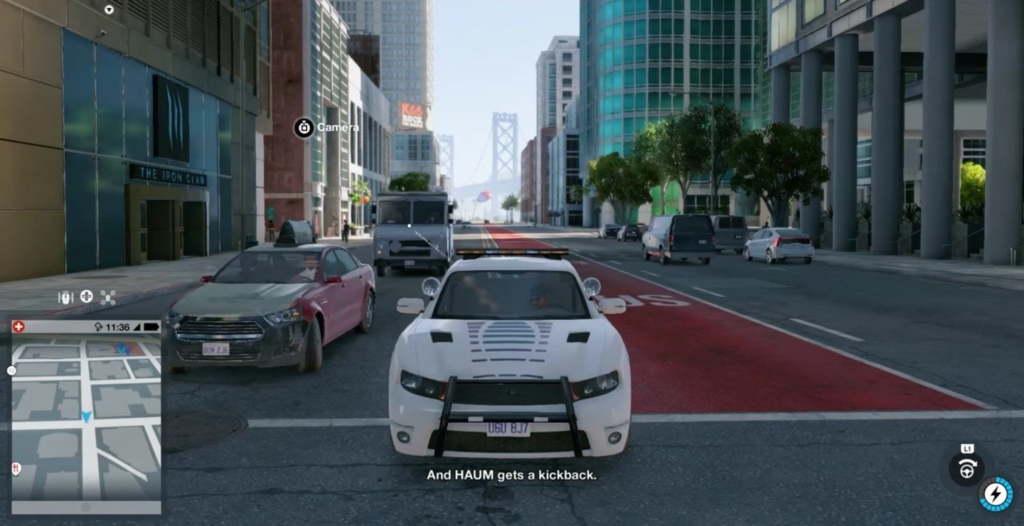
1. Watch Dogs (2014): Setting a New Standard for Open-World Graphics
Watch Dog 2 Game When the original Watch Dogs was released in 2014, it was a technical showcase, particularly in terms of lighting, environmental effects, and the dynamic city environments. The game was set in a near-future version of Chicago, and the developers at Ubisoft Montreal used the city’s real-world blueprint to craft a highly detailed and believable urban landscape. From the streets filled with pedestrians and traffic to the towering skyscrapers and busy public transportation systems, the world felt alive and immersive. The environment was not just a backdrop but an interactive, responsive part of the experience.
Key Graphics Features of Watch Dogs (2014):
- Realistic Lighting and Weather Effects: One of the most striking features of Watch Dogs was its realistic lighting system, which created a dynamic and atmospheric experience. The game’s day-night cycle was beautifully rendered, with sunsets and sunrises casting long shadows over the city. Rainy weather could alter visibility and affect driving mechanics, adding a layer of realism to the gameplay.
- Detailed Urban Environment: The game’s version of Chicago felt lived-in, with bustling streets, intricate alleyways, and realistic traffic patterns. Each district had its own unique character, from the glitzy downtown areas to the more run-down neighborhoods. The attention to detail in architecture, street signs, and even the way NPCs interacted with the environment contributed to the immersion.
- Character Models and Animations: While Watch Dogs boasted impressive graphics overall, character models were a bit stiff, especially during conversations or interactions. However, Aiden Pearce’s animations and the facial expressions of key characters were generally well done, especially considering the hardware limitations of the time.
- Hacking Visuals: The game’s signature mechanic of hacking was visually represented with sleek, holographic interfaces and blue-colored data streams that appeared whenever Aiden accessed the city’s Central Operating System (ctOS). This integration of visual effects into the world was an essential aspect of the game, as it emphasized the seamless blending of the digital and physical worlds.
Despite its visual strengths, the original Watch Dogs also faced some criticism regarding graphical downgrades. Prior to release, the game had been shown with stunning visuals at E3 2012, but the final product didn’t quite live up to those early demos. This discrepancy sparked controversy among players, although it was still considered a visually impressive game for its time.
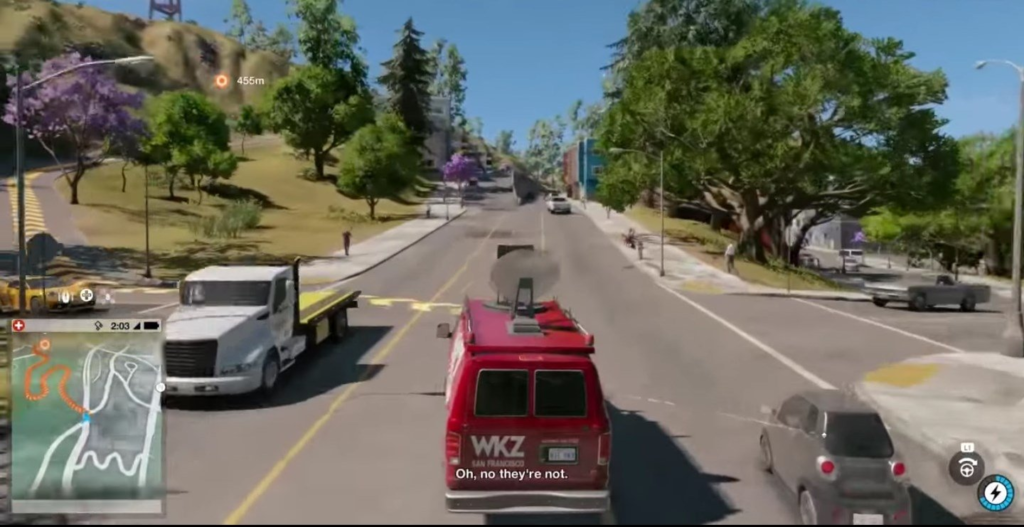
2. Watch Dogs 2 (2016): A Brighter, More Colorful World
Watch Dogs 2 took a markedly different direction in terms of tone and environment. Set in San Francisco, the game featured a more vibrant, colorful, and energetic world, reflecting the diverse and tech-savvy culture of the Bay Area. The graphics in Watch Dogs 2 improved upon the original in several ways, offering greater fidelity, smoother animations, and enhanced details in both character models and environmental design.
Key Graphics Features of Watch Dogs 2 (2016):
- Improved Lighting and Shadows: Watch Dogs 2 significantly improved the lighting system, making the world feel more dynamic and alive. The way sunlight filtered through trees or reflected off glass buildings contributed to the game’s aesthetic. The game’s dynamic weather system also played a large part in altering the atmosphere of the world, with rain and fog creating different visual experiences.
- Vivid and Diverse Environments: San Francisco offered a much more varied and colorful setting compared to Chicago. From the tech-heavy streets of Silicon Valley to the graffiti-splattered walls of the Mission District, Watch Dogs 2 was a visual delight. The game did an excellent job of capturing the city’s landmarks, including the Golden Gate Bridge, Alcatraz Island, and the hilly streets.
- Character Customization and Detail: One of the most noticeable improvements in Watch Dogs 2 was the attention to detail in character design. The protagonist, Marcus Holloway, and the diverse cast of supporting characters were well-detailed, with realistic facial animations and expressive body language. The game also featured more diverse NPCs, with a wide variety of ethnicities, hairstyles, and fashion choices that added to the authenticity of the world.
- Hacker Aesthetics: The game’s visual style also leaned more into the concept of digital subversion and hacking. Hacking visuals were slicker and more integrated into the environment, with a streamlined, user-friendly interface that matched the game’s more playful, rebellious tone. This new aesthetic, with bright colors and abstract designs, gave the game a distinct feel compared to the darker and more serious first entry.
- Higher Frame Rate and Performance: The technical performance was improved, with the game running at a higher frame rate and offering smoother gameplay. The animation quality was generally more fluid, particularly in character movements, which helped enhance the overall realism of the game.
3. Watch Dogs: Legion (2020): Cutting-Edge Graphics in a Dystopian Future
Watch Dogs: Legion, the third installment in the series, takes the franchise into a new frontier with its dystopian setting in near-future London. The game was designed to push the capabilities of next-gen hardware (PS5, Xbox Series X|S) while also being compatible with older systems. It boasts impressive graphical advancements, including enhanced textures, ray tracing, and a dynamic city that feels both vast and alive.
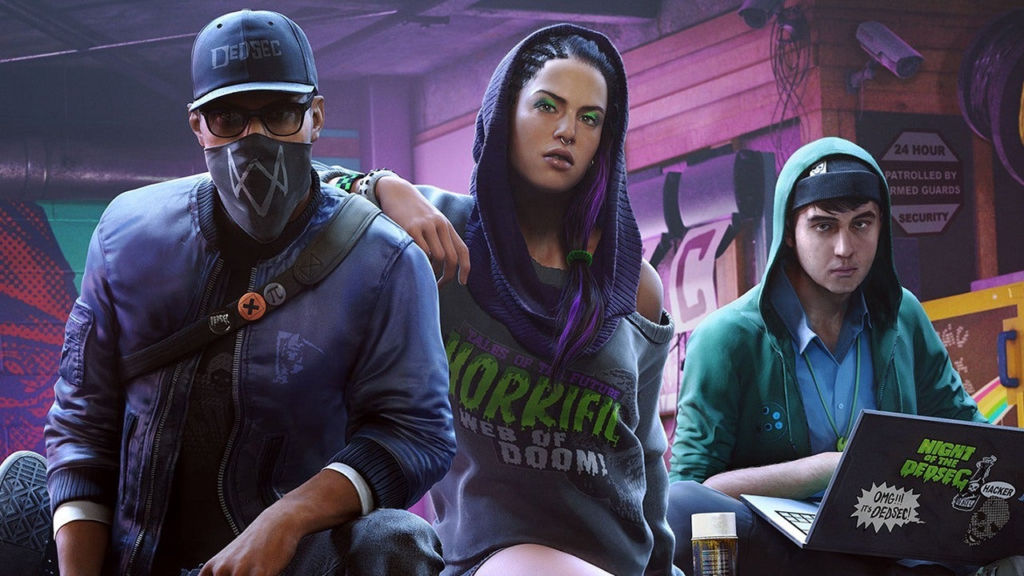
Key Graphics Features of Watch Dogs: Legion (2020):
- Ray Tracing and Enhanced Lighting: One of the standout visual features of Legion is its use of ray tracing, which provides real-time reflections, accurate lighting, and realistic shadows. This makes the city feel more immersive, with neon lights reflecting off wet streets at night, or sunlight casting long shadows across the city’s iconic landmarks during the day. These enhancements give the game a polished, modern look that stands out in the open-world genre.
- Detailed, Lifelike London: The representation of London is highly detailed, capturing the city’s landmarks like Big Ben, Tower Bridge, and the London Eye, along with the gritty, urban sprawl of its backstreets. The environments are highly interactive, and the use of procedural generation allows for a dynamic cityscape that feels alive and reactive to the player’s actions.
- Facial Animations and Character Detail: The game’s unique “Play as Anyone” mechanic is enabled by highly detailed character models. Although every NPC can potentially be recruited, the game does not skimp on visual quality. Each character model is meticulously designed, with lifelike facial animations and unique characteristics that make every recruit feel distinct. This is a technological achievement, as it allows the player to control a vast number of characters without sacrificing the quality of each model.
- Advanced Animations and Motion Capture: The animation quality in Watch Dogs: Legion is far superior to previous entries. Motion capture technology was used extensively to bring lifelike movement to characters. Whether they are running, driving, or engaging in combat, the fluidity of animation enhances the overall realism of the experience. In particular, character reactions to hacking events—such as drones being hacked or a vehicle suddenly stopping—feel immediate and responsive.
- Immersive City Design and Interactivity: Beyond the visual aesthetics, the game makes the environment itself an integral part of the experience. The sense of living in a surveillance state is enhanced by billboards, drones, and security cameras that are always watching. The constant presence of these elements, combined with the high-fidelity graphics, serves to amplify the game’s central themes of control and resistance.
Through the franchise’s stunning graphics, Ubisoft has managed to create immersive environments that reflect the technological and societal themes of the games. The evolution of graphics across the series also mirrors the increasing role of technology in our daily lives and the growing concern over privacy, surveillance, and control. Whether it’s the dimly lit streets of Chicago, the bright and sunny Bay Area, or the dystopian streets of London, the Watch Dogs series has set a high bar for open-world visuals, and it remains one of the most visually compelling franchises in modern gaming.
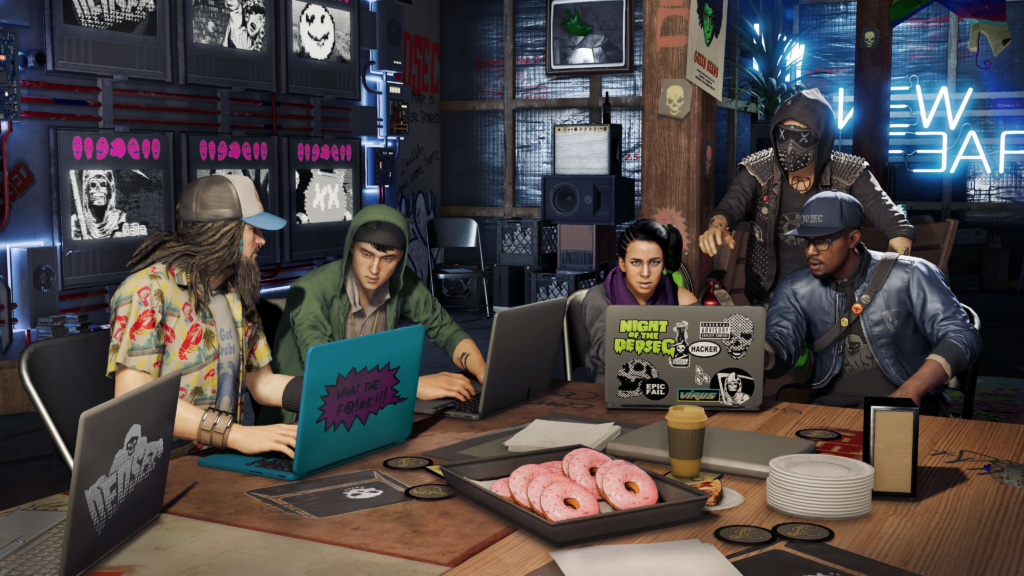
Conclusion: A Reflection of Our Digital Age
The Watch Dogs series serves as a cautionary tale about the risks and rewards of living in a hyper-connected, digital world. Each installment, in its own way, tackles complex issues related to surveillance, privacy, and the consequences of unchecked technological advancement. The games are not just about hacking or taking down corrupt systems; they are about exploring the ethical dilemmas and personal choices that arise when technology is used to shape our world.
Game Download
You Can Get the Link in 59 seconds.
As we continue to grapple with the challenges of living in an increasingly surveilled and data-driven society, Watch Dogs offers a timely and thought-provoking reflection of our digital age. Through its dynamic gameplay, engaging characters, and deep thematic exploration, the series raises important questions about the balance between security and freedom, privacy and convenience, control and resistance. In the end, Watch Dogs is not just a game about hacking; it is a game about power, both digital and real, and the responsibility that comes with it.

